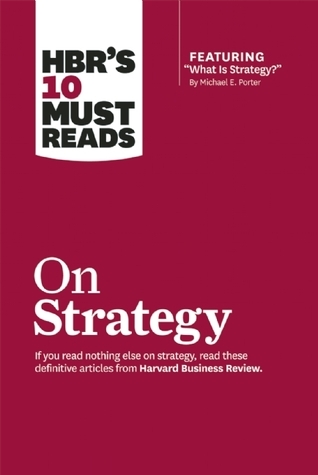More on this book
Community
Kindle Notes & Highlights
Read between
November 5, 2018 - March 20, 2019
The root of the problem is the failure to distinguish between operational effectiveness and strategy.
And bit by bit, almost imperceptibly, management tools have taken the place of strategy.
A company can outperform rivals only if it can establish a difference that it can preserve. It must deliver greater value to customers or create comparable value at a lower cost, or do both.
Activities, then, are the basic units of competitive advantage.
Overall advantage or disadvantage results from all a company’s activities, not only a few.
Operational effectiveness (OE) means performing similar activities better than rivals perform them. Operational effectiveness includes but is not limited to efficiency. It refers to any number of practices that allow a company to better utilize its inputs by, for example, reducing defects in products or developing better products faster.
Some companies are able to get more out of their inputs than others because they eliminate wasted effort, employ more advanced technology, motivate employees better, or have greater insight into managing particular activities or sets of activities.
Strategic positioning attempts to achieve sustainable competitive advantage by preserving what is distinctive about a company. It means performing different activities from rivals, or performing similar activities in different ways.
Think of it as the maximum value that a company delivering a particular product or service can create at a given cost, using the best available technologies, skills, management techniques, and purchased inputs.
Strategy is the creation of a unique and valuable position, involving a different set of activities.
serving few needs of many customers (Jiffy Lube provides only auto lubricants) • serving broad needs of few customers (Bessemer Trust targets only very high-wealth clients) • serving broad needs of many customers in a narrow market (Carmike Cinemas operates only in cities with a population under 200,000)
Strategy requires you to make trade-offs in competing—to choose what not to do.
Fit drives both competitive advantage and sustainability:
Lotus Notes,
For at least the past decade, managers have been preoccupied with improving operational effectiveness.
The popularity of outsourcing and the virtual corporation reflect the growing recognition that it is difficult to perform all activities as productively as specialists.
Few companies have competed successfully on the basis of operational effectiveness over an extended period, and staying ahead of rivals gets harder every day.
The most generic solutions—those that can be used in multiple settings—diffuse the fastest.
The second reason that improved operational effectiveness is insufficient—competitive convergence—is more subtle and insidious.
As rivals imitate one another’s improvements in quality, cycle times, or supplier partnerships, strategies converge and competition becomes a series of races down identical paths that no one can win.
Competition based on operational effectiveness alone is mutually destructive, leading to wars of attrition that can be arrested only by limiting competition.
Competition based on operational effectiveness alone is mutually destructive, leading to wars of attrition that can be arrested only by limiting competition.
Continuous improvement has been etched on managers’ brains.
But its tools unwittingly draw companies toward imitation and homogeneity.
productivity frontier,
To do so, they may have to overcome strong cultural barriers. Japan is notoriously consensus oriented, and companies have a strong tendency to mediate differences among individuals rather than accentuate them.
Competitive strategy is about being different. It means deliberately choosing a different set of activities to deliver a unique mix of value.
Most managers describe strategic positioning in terms of their customers: “Southwest Airlines serves price- and convenience-sensitive travelers,”
But the essence of strategy is in the activities—choosing to perform activities differently or to perform different activities than rivals.
Ikea targets young furniture buyers who want style at low cost.
What turns this marketing concept into a strategic positioning is the tailored set of activities that make it work.
In principle, incumbents and entrepreneurs face the same challenges in finding new strategic positions. In practice, new entrants often have the edge.
Most commonly, however, new positions open up because of change.
Ikea will even sell you a roof rack for your car that you can return for a refund on your next visit.
Strategic positions emerge from three distinct sources, which are not mutually exclusive and often overlap.
producing a subset of an industry’s products or services.
Many investors include one or more Vanguard funds in their portfolio, while buying aggressively managed or specialized funds from competitors.
The people who use Vanguard or Jiffy Lube are responding to a superior value chain for a particular type of service. A variety-based positioning can serve a wide array of customers, but for most it will meet only a subset of their needs.
A second basis for positioning is that of serving most or all the needs of a parti...
This highlight has been truncated due to consecutive passage length restrictions.
The bases for positioning—varieties, needs, and access—carry the understanding of those generic strategies to a greater level of specificity.
variant of needs-based positioning arises when the same customer has different needs on different occasions or for different types of transactions.
But a critical element of needs-based positioning is not at all intuitive and is often overlooked. Differences in needs will not translate into meaningful positions unless the best set of activities to satisfy them also differs.
Despite the most generous compensation of account officers and the highest personnel cost as a percentage of operating expenses, Bessemer’s differentiation with its target families produces a return on equity estimated to be the highest of any private banking competitor.
The third basis for positioning is that of segmenting customers who are accessible in different ways.
Segmenting by access is less common and less well understood than the other two bases.
2% (the industry average is 5%).


